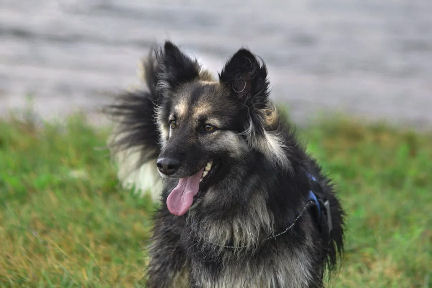Don’t tell your dog fun is done.
Dogs are great at having fun and playing games. That’s why game-based training works so well. But what about when it’s time to end the game? How do you keep your dog engaged and happy, but still end the session?

This week one of our student’s dogs bolted and ran around, disrupting our class, the other class, and generally playing keep-away. Nothing bad happened and Fran corralled the silly German Shepherd girl in just a couple of minutes on her second round-about. But it was upsetting for our student – especially since she was planning to compete in Obedience this week.
She let us know she was having second thoughts about that obedience trial. And told us this was the third time her dog had taken off on her instead of allowing the leash to be attached. And now we have the information needed to address the issue.
Everything’s a game
“Dogs are the gods of frolic,” according to Henry Ward Beecher. We’re not sure he meant that as a good thing (he was a clergyman in the 19th century). But regardless, he was right. If there’s a game going on, dogs are in!
That’s a trait that we use all the time. Dogs respond almost instantly to laughter and fun. So make everything fun for your dog.
In our student’s situation, she has to make a point of continuing the fun after the leash is on.
Logically, if the fun stops when a particular thing happens, you’re going to avoid that thing. If every time she put on her dog’s leash the dog immediately goes in the crate and stops having fun, the dog will avoid the leash.
Turn it around
Her plan of action is to have a special toy that only comes out right after the leash goes on. She won’t have to play for long, just long enough for the dog to associate more fun with putting on the leash. Then, since we’re always honest with our dogs, she’ll say something like “That’s all!” and end the game.
Like almost everyone, her first instinct when her dog runs is to chase the dog. She’s going to make a conscious effort to run away from her dog. It goes against every impulse, but it’s how to get your dog running to you. (For more on ending that “Keep Away” game, this article helps. And this one to get your dog running to you every time.)
Most dogs love to chase. They also love you. So if you take off in the opposite direction, all the while yelling his/her name, your dog is going to chase you.
Grab that collar
When your dog catches up to you, be sure to get hold of their collar before you reward. One of the first games we teach puppy people is the collar grab game, and it’s a life-saver.
In an emergency situation, you need to grab hold of your dog. If the dog isn’t used to that, they’re going to shy away. If, on the other hand, they know the Collar Grab game, it’s not an issue. It’s one of the games we play regularly with our dogs to keep it ever fresh. You never know when you’ll need it.
Read the room
Your dog knows you. They know your habits, patterns, and routine. If your dog is always misbehaving when something is about to happen (getting in the car, putting on the leash, going in the crate, getting a bath), you’re giving off signals that the “bad” thing is imminent. Recognizing what’s happening will help you change it.
We’re not suggesting that you change your routine to “fool” the dog. That never works. And it means you’re lying to your dog, which is a huge no-no. Instead, examine the pattern and see where you can inject a game. Then play the game when it doesn’t matter. Your dog’s attitude will turn around so when you need to give them a bath, it’s another chance to play, not a sign that dog fun is done.






